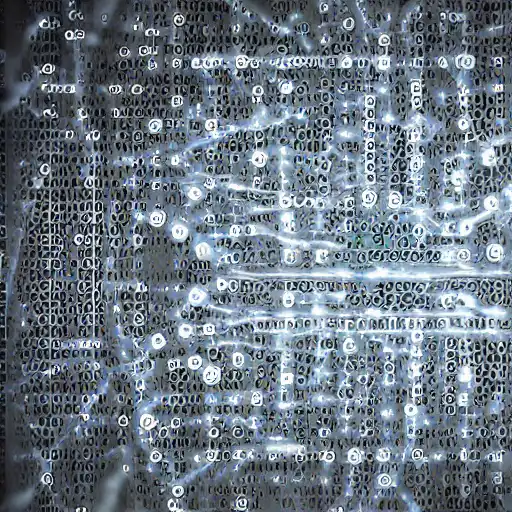
August 6th, 2023
Welcome back to our Advanced Machine Learning series! In this blog post, we'll embark on a thrilling journey into the realm of Generative Adversarial Networks (GANs), a breakthrough technology that has revolutionized the way we generate realistic data.
What are Generative Adversarial Networks?
Generative Adversarial Networks (GANs) consist of two neural networks, the generator and the discriminator, engaged in a captivating game of deception. The generator attempts to produce synthetic data that closely resembles real data from a given distribution, while the discriminator tries to differentiate between real and fake data. Through adversarial training, the generator improves its ability to create increasingly convincing data, while the discriminator enhances its skill at detecting the fakes. This dynamic interplay results in the generation of remarkably realistic data.
Key Concepts of GANS
- Generator: The generator network takes random noise as input and transforms it into synthetic data that ideally follows the same distribution as the real data. Over time, as the generator learns from the discriminator's feedback, it becomes more adept at generating high-quality samples.
- Discriminator: The discriminator network acts as the critic, attempting to distinguish between real data from the training set and fake data produced by the generator. As the training progresses, the discriminator becomes more proficient at discerning subtle differences between real and synthetic samples.
- Adversarial Training: During training, the generator and discriminator play a two-player minimax game. The generator aims to minimize the discriminator's ability to distinguish its fake samples, while the discriminator endeavors to maximize its ability to correctly classify real and fake data. This competitive process results in a Nash equilibrium, where the generator produces highly realistic samples and the discriminator cannot differentiate between them and real data.
- Loss Functions: The generator and discriminator use specific loss functions to guide their learning process. The generator's loss is inversely related to the discriminator's confidence in identifying fake data. Conversely, the discriminator's loss is determined by its accuracy in distinguishing between real and fake samples.
Applications of GANS
Generative Adversarial Networks have found a multitude of applications, including:
- Image Generation: GANs can generate highly realistic images of faces, animals, and objects, inspiring creativity in the field of AI-generated art.
- Data Augmentation: GANs can augment training datasets with synthetic samples, boosting the performance of machine learning models.
- Super-Resolution: GANs can enhance the resolution of low-resolution images, improving the visual quality and details.
- Style Transfer: GANs can transfer the style of one image to another, enabling impressive visual transformations.
Implementing a GAN with Julia and Flux.jl
Let's build a simple GAN using Julia and Flux.jl to generate synthetic 2D data that resembles a Gaussian distribution.
# Load required packages
using Flux
using Random
using Flux: onehotbatch
# Generate real 2D data from a Gaussian distribution
function real_data_batch(batch_size)
return randn(2, batch_size)
end
# Generate random noise as input to the generator
function noise_batch(batch_size)
return randn(100, batch_size)
end
# Define the generator architecture
generator = Chain(
Dense(100, 256, relu),
Dense(256, 2),
)
# Define the discriminator architecture
discriminator = Chain(
Dense(2, 256, relu),
Dense(256, 1, sigmoid),
)
# Define loss functions for generator and discriminator
loss_gen(x) = -mean(log.(discriminator(generator(x))))
loss_disc(x_real, x_fake) = -mean(log.(discriminator(x_real))) - mean(log.(1 - discriminator(x_fake)))
# Create optimizers for generator and discriminator
opt_gen = ADAM(0.001)
opt_disc = ADAM(0.001)
# Training loop
batch_size = 64
epochs = 1000
for epoch in 1:epochs
for _ in 1:(1000 ÷ batch_size)
real_data = real_data_batch(batch_size)
noise = noise_batch(batch_size)
# Update discriminator
Flux.train!(loss_disc, params(discriminator), (real_data, generator(noise)), opt_disc)
# Update generator
Flux.train!(loss_gen, params(generator), noise, opt_gen)
end
end
Conclusion
Generative Adversarial Networks (GANs) have ushered in a new era of realistic data generation, pushing the boundaries of what AI can accomplish in creative tasks. In this blog post, we've explored the key concepts of GANs and built a simple GAN using Julia and Flux.jl to generate synthetic 2D data.
In the next blog post, we'll delve into the exciting world of Transfer Learning, where pre-trained models are adapted for new tasks, saving valuable time and computational resources. Get ready to transfer knowledge and excel in various domains with Transfer Learning! Stay tuned for more exciting content on our Advanced Machine Learning journey!